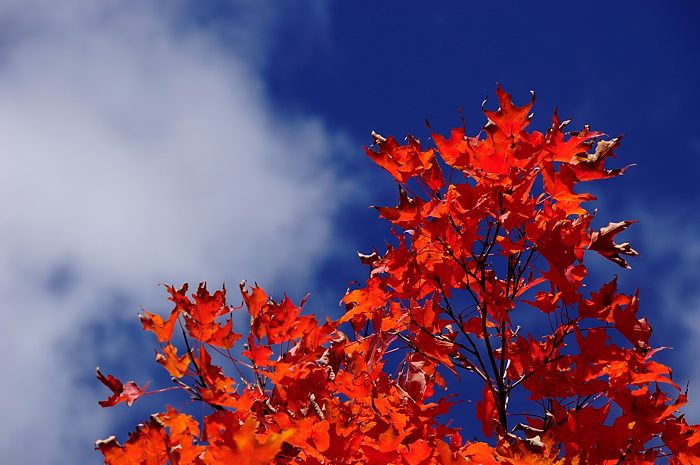If you live in a place where the seasons change, then odds are the trees are giving you a colorful show right now. If that’s the case, be sure and take your polarizer when you head out to shoot pictures.
I was reminded of this last weekend while in St. Paul to teach a workshop. Minnesota is nearing peak for fall foliage, and the sunny weather made the weekend a treat for the eyes.
Most people think of a polarizing filter as a tool used to darken blue skies. Or, they also use it to remove or reduce reflections in glass and water. But fewer know that it can make a big difference when shooting foliage.
Remember that a polarizer (circular, because linear can confuse autofocus and metering systems) only does one thing, and that’s allowing just one angle of light to pass through. The result of that is it helps get rid of reflections. Those reflections can be from water droplets in the air. Remove those, and the sky looks darker. And removing those reflections from water can either let you see more clearly into it, or make it appear darker (by removing the shiny surface). The best use of it in the fall, though, is for photographing foliage.
Most leaves have a waxy covering. That causes reflections. Remove it and you can see the color of the leaf more clearly. And if there’s been rain, the water droplets on the leaves reflect light too, obscuring their natural color even more. So using a polarizer when

Same scene a few seconds later with the polarizing filter, which brings out much more of the color. Photo copyright Reed Hoffmann.
shooting fall foliage almost always results in more colorful photos. Just remember, a polarizer is designed to turn, and rotating it will change the effect it gives you. And don’t keep a polarizer on your lens all the time. It will block close to two full stops of light, which will result in you having to shoot at a slower shutter speed, wider aperture, higher ISO, or all three. Keep it handy, in you camera bag or a pocket, and if you think it will help, take it out, look through it and turn it. If you like the effect, put it on the lens.
And my guess is, if you start using it to shoot fall colors, you’re going to like it!


